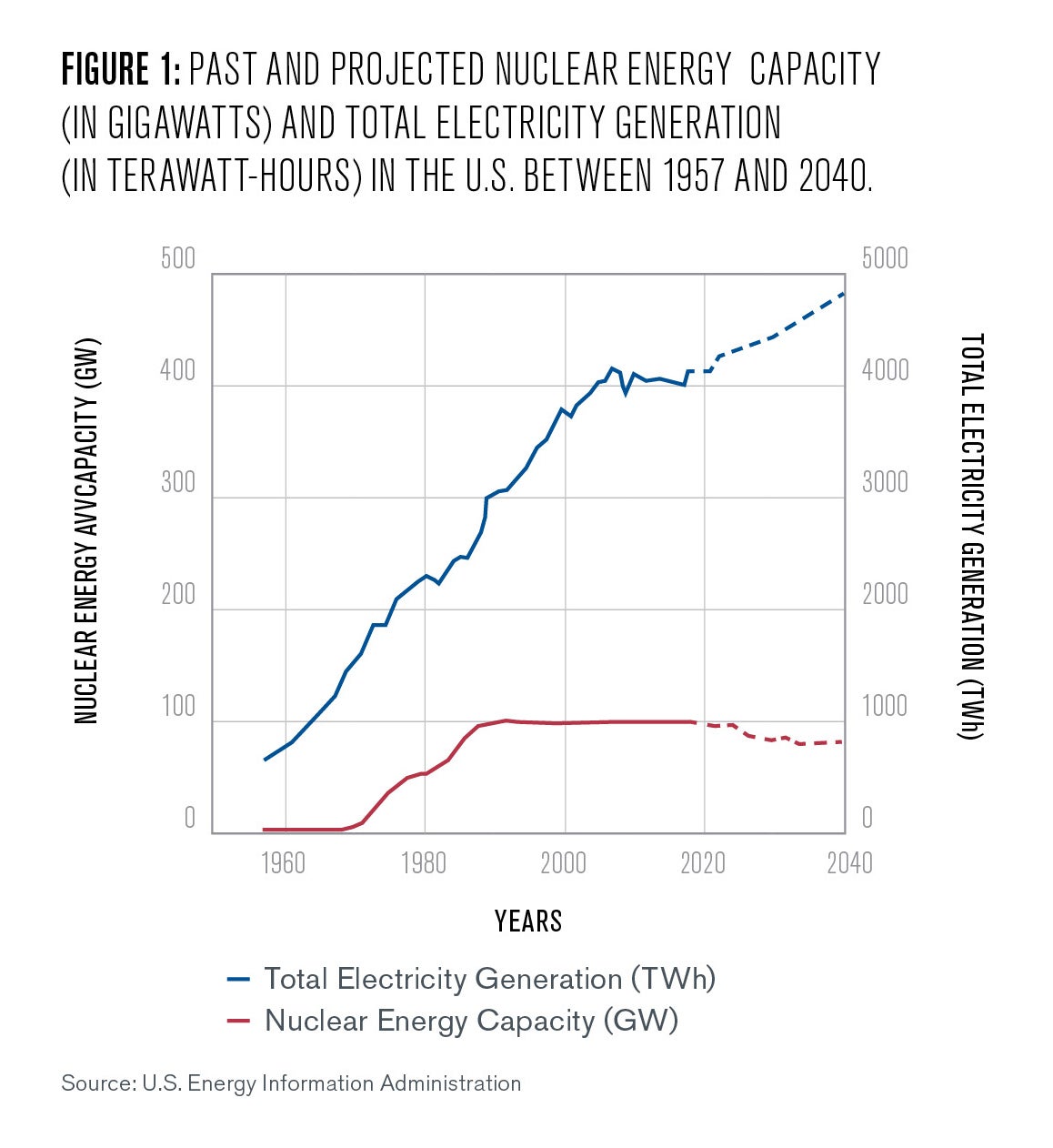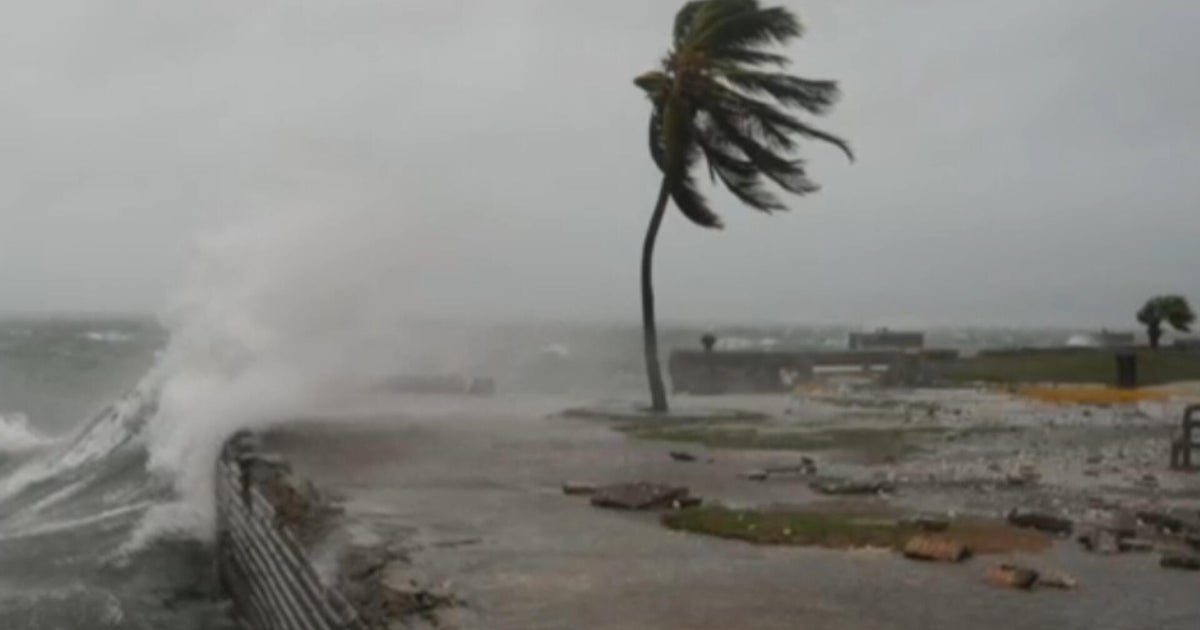New DOE Report On How Greenhouse Gases Affect U.S. Climate – Forbes

Analysis of the U.S. Department of Energy Report on Greenhouse Gas Emissions and Climate Impacts Through the Lens of Sustainable Development Goals (SDGs)
This report provides a systematic review of the U.S. Department of Energy’s (DOE) publication, “A Critical Review of Impacts of Greenhouse Gas Emissions on the U.S. Climate.” The analysis evaluates the DOE report’s key statements in the context of the United Nations Sustainable Development Goals (SDGs), focusing on the interplay between energy policy, climate action, and global development objectives.
Energy Systems, Economic Progress, and Sustainable Development
The DOE report frames modern energy systems as fundamental to human progress, a view that aligns with several SDGs but also presents conflicts with environmental and health-related goals.
The Duality of Modern Energy and its Impact on SDGs
The assertion that modern energy is “miraculous” and a driver of global progress directly relates to SDG 7 (Affordable and Clean Energy) and SDG 8 (Decent Work and Economic Growth). However, the byproducts of this progress pose significant challenges to other goals.
- SDG 12 (Responsible Consumption and Production): The legacy of industrial activity, including hazardous waste sites from oil and gas drilling and the proliferation of plastics derived from crude oil, undermines sustainable production patterns.
- SDG 14 (Life Below Water): Plastic waste accumulates in marine environments, threatening aquatic ecosystems.
- SDG 3 (Good Health and Well-being): Emerging evidence linking microplastics in the food chain to health conditions like autism highlights a direct conflict between industrial byproducts and public health objectives.
Balancing Climate Action with Energy Access
The DOE report prioritizes the challenge of global energy poverty over climate change, framing it as the “greatest threat facing humanity.” This perspective creates a complex dialogue between key SDGs.
- SDG 1 (No Poverty) & SDG 7 (Affordable and Clean Energy): The report argues that expanding access to reliable energy is paramount for improving the human condition and alleviating poverty, citing the correlation between energy density and GDP.
- SDG 13 (Climate Action): This prioritization frames climate change as a “challenge—not a catastrophe,” potentially downplaying the urgency required to meet the targets of SDG 13. The oil and gas industry’s contribution of approximately 50% of greenhouse gas emissions is noted as a direct link to the drivers of climate change.
Climate Action (SDG 13): Assessing Impacts and Uncertainties
A central theme of the DOE report is the level of uncertainty in climate science and the attribution of environmental events to climate change. This directly impacts the strategies for achieving SDG 13 (Climate Action).
Attribution of Extreme Weather Events
The report contends that media coverage often exaggerates the link between climate change and specific weather events, a claim supported by data on certain phenomena.
- Historical data for U.S. river floods, according to the IPCC, shows “limited evidence” and “low agreement” on influences from climate change.
- A broader analysis suggests that four major types of extreme weather events (droughts, wildfires, hurricanes, floods) have not demonstrably worsened on a global scale over the last 50 years, complicating direct attribution to global warming.
Uncertainty in Climate Modeling
The DOE report highlights significant variance in climate model predictions, which challenges the formation of precise, data-driven climate policy under SDG 13.
- Global climate models show a wide range of potential surface warming (1.8°C to 5.7°C) for a doubling of CO2 concentration.
- This contrasts with earlier, highly accurate 1982 modeling by Exxon, which correctly predicted CO₂ concentrations and temperature increases by 2019. However, predicting the secondary effects of climate change, such as impacts on weather, remains fraught with uncertainty.
- The report also suggests that the contribution of solar activity to 20th-century warming may be underestimated, pointing to a correlation between solar irradiance proxies and Earth’s temperature records from 1600-2000. This introduces another variable that complicates models based solely on GHG emissions.
Sea-Level Rise Projections and SDG 11
The report’s findings on sea-level rise present a discrepancy between U.S. and global data, impacting planning for SDG 11 (Sustainable Cities and Communities).
- U.S. Data: The report states that U.S. tide gauge measurements show no significant acceleration in the rate of sea-level rise beyond the historical average.
- Global Data: In contrast, global data from NASA indicates an accelerating, exponential rate of rise, which, if extrapolated, could result in a nearly 3-foot increase by 2100. Such a rise would be catastrophic for low-lying nations and coastal communities, requiring massive investment in resilient infrastructure, as exemplified by Singapore’s planned US$74 billion expenditure on seawalls.
Ecosystem Impacts: Land and Marine Environments (SDG 14 & 15)
The DOE report addresses the direct effects of elevated CO2 concentrations on terrestrial and marine ecosystems, with implications for SDG 14 (Life Below Water) and SDG 15 (Life on Land).
Planetary Greening vs. Agricultural Productivity
The report notes that elevated CO2 enhances plant growth, contributing to a global “greening” effect and potentially increasing agricultural productivity. This aligns with aspects of SDG 2 (Zero Hunger) and SDG 15 (Life on Land). However, it also acknowledges the unprecedented atmospheric CO2 concentration, which introduces significant uncertainty about long-term ecosystem stability.
Ocean Acidification and Coral Reefs
The assessment of impacts on marine life, a core component of SDG 14, is identified as a point of contention.
- The report suggests that the threat to coral reefs may be overstated, citing a rebound in hard coral cover on the Great Barrier Reef (GBR).
- This assessment is challenged on the grounds that it overlooks the primary driver of coral bleaching (rising sea temperatures) and includes potentially dead (bleached) corals in its cover measurements.
- Data on mass bleaching events on the GBR and the declaration of a 4th Global Bleaching Event by NOAA in 2024 suggest a severe and ongoing crisis for coral ecosystems worldwide, directly undermining the objectives of SDG 14.
Policy, Innovation, and the Path to Sustainable Energy (SDG 7 & 9)
The report advocates for an innovation-led approach to developing cleaner energy, a goal central to SDG 7 (Affordable and Clean Energy) and SDG 9 (Industry, Innovation, and Infrastructure). However, it questions current U.S. policy alignment with this principle.
Critique of U.S. Energy Policy
A contradiction is noted between the call to “empower innovation” and recent policy actions that appear to handicap commercially mature renewable technologies.
- The reduction of tax credits for wind and solar energy is questioned, especially given that these sources accounted for over 90% of new U.S. energy investments in the past two years.
- The administration’s preference for commercially immature technologies like advanced nuclear and next-gen geothermal over proven, cheaper renewables like wind and solar is highlighted.
- The report counters the argument that wind and solar are unreliable by citing Australia’s success, where renewables constitute a large and growing share of electricity generation, stabilized by grid-scale batteries and regional energy sharing—key components of innovative infrastructure under SDG 9.
Analysis of Sustainable Development Goals in the Article
1. Which SDGs are addressed or connected to the issues highlighted in the article?
-
SDG 1: No Poverty
- The article directly addresses this goal by discussing “global energy poverty” as a potential “greatest threat facing humanity.” It links access to energy with economic well-being, stating that GDP correlates with energy density and that expanding access to reliable, affordable energy can lift billions out of poverty.
-
SDG 3: Good Health and Well-being
- This goal is connected through the mention of health impacts from energy by-products. The article cites evidence suggesting a link between the rise in “autism is caused my microplastics,” which originate from crude oil and are found in food packaging.
-
SDG 7: Affordable and Clean Energy
- This is a central theme. The article discusses the importance of “modern energy,” the need for “reliable, affordable energy” to combat energy poverty, and the debate around different energy sources, including hydrocarbon-based fuels, wind, solar, nuclear, and geothermal. It highlights investments in renewables, noting “wind and solar in the U.S. accounted for over 90% of new energy investments.”
-
SDG 9: Industry, Innovation, and Infrastructure
- The article connects to this SDG by emphasizing how energy “drives every industry” and the call to “empower innovation rather than restrain it” to provide cleaner, more abundant energy. It also discusses the need for infrastructure like “grid-scale batteries” to support renewable energy reliability.
-
SDG 11: Sustainable Cities and Communities
- This goal is relevant through the discussion of climate-related risks to human settlements. The article mentions the threat of rising sea levels to low-lying nations and cites Singapore’s plan to spend billions to “protect against rising sea levels” by building seawalls, a measure to make communities more resilient.
-
SDG 12: Responsible Consumption and Production
- The article addresses this by highlighting the negative consequences of industrial activity, such as the creation of hazardous waste sites managed by the “Superfund program.” It also points to the problem of plastic waste, noting that plastics “are a big part of mountainous landfills and trash dumps in the oceans.”
-
SDG 13: Climate Action
- This is the core subject of the article. It extensively reviews a report on the “Impacts of Greenhouse Gas Emissions on the U.S. Climate,” discussing global warming, rising CO2 concentrations, climate modeling uncertainty, and the impacts of climate change, such as extreme weather events and sea-level rise.
-
SDG 14: Life Below Water
- This goal is explicitly addressed through the discussion of ocean health. The article mentions plastic pollution in “trash dumps in the oceans” and provides a detailed analysis of the impact of rising sea temperatures and ocean acidification on coral reefs, specifically referencing the “mass bleaching events on the Great Barrier Reef.”
-
SDG 15: Life on Land
- The article touches on this SDG by mentioning the effect of elevated CO2 concentrations on terrestrial ecosystems. It notes that increased CO2 contributes to “globally contributing to “greening” the planet and increasing agricultural productivity.”
2. What specific targets under those SDGs can be identified based on the article’s content?
-
Under SDG 1 (No Poverty):
- Target 1.2: By 2030, reduce at least by half the proportion of men, women and children of all ages living in poverty in all its dimensions according to national definitions. The article’s focus on “global energy poverty” as a contributor to “ordinary poverty” and the call to lift “billions out of poverty” through energy access directly relates to this target.
-
Under SDG 3 (Good Health and Well-being):
- Target 3.9: By 2030, substantially reduce the number of deaths and illnesses from hazardous chemicals and air, water and soil pollution and contamination. This is implied by the mention of “hazardous waste sites left behind by industrial activities” and the potential health link between “microplastics” and autism.
-
Under SDG 7 (Affordable and Clean Energy):
- Target 7.1: By 2030, ensure universal access to affordable, reliable and modern energy services. This is directly addressed by the statement that “improving the human condition depends on expanding access to reliable, affordable energy.”
- Target 7.2: By 2030, increase substantially the share of renewable energy in the global energy mix. The article discusses this by comparing wind and solar with other sources and noting that in South Australia, “renewables are growing” and generate “75% of its power from wind and solar and batteries.”
-
Under SDG 9 (Industry, Innovation, and Infrastructure):
- Target 9.4: By 2030, upgrade infrastructure and retrofit industries to make them sustainable… The call to “empower innovation” for “cleaner, more abundant energy” and the need to “install grid-scale batteries” reflect this target.
-
Under SDG 11 (Sustainable Cities and Communities):
- Target 11.5: By 2030, significantly reduce the number of deaths and the number of people affected and substantially decrease the direct economic losses relative to global gross domestic product caused by disasters, including water-related disasters. This is relevant to the discussion of floods and the potential for a 3-foot sea-level rise by 2100, which would worsen storm surge damage.
- Target 11.b: By 2030, substantially increase the number of cities and human settlements adopting and implementing integrated policies and plans towards… resilience to disasters. This is exemplified by the mention of Singapore’s plan to “spend US$74 billion over the next one hundred years to protect against rising sea levels.”
-
Under SDG 12 (Responsible Consumption and Production):
- Target 12.4: By 2020, achieve the environmentally sound management of chemicals and all wastes throughout their life cycle. The reference to the EPA’s “Superfund program” for cleaning up “hazardous waste sites” directly relates to this target.
- Target 12.5: By 2030, substantially reduce waste generation. This is addressed by the mention of plastic waste from water bottles and car interiors contributing to “mountainous landfills and trash dumps in the oceans.”
-
Under SDG 13 (Climate Action):
- Target 13.1: Strengthen resilience and adaptive capacity to climate-related hazards and natural disasters in all countries. The entire article, which debates the severity and trends of hurricanes, floods, droughts, and sea-level rise, is centered on this target.
-
Under SDG 14 (Life Below Water):
- Target 14.1: By 2025, prevent and significantly reduce marine pollution of all kinds, in particular from land-based activities, including marine debris and nutrient pollution. The mention of “plastics, largely made from chemicals like olefins that come from… crude oil” ending up in “trash dumps in the oceans” is a direct example.
- Target 14.2: By 2020, sustainably manage and protect marine and coastal ecosystems to avoid significant adverse impacts. The detailed discussion of “mass bleaching events on the Great Barrier Reef” due to rising sea temperatures directly relates to protecting these ecosystems.
3. Are there any indicators mentioned or implied in the article that can be used to measure progress towards the identified targets?
Yes, the article mentions several quantitative and qualitative indicators:
- Greenhouse Gas Emissions: The article states that “emissions from fossil fuel combustion and cement manufacture have jumped from 2 billion tons per year in 1900 to about 40 billion tons per year today.” It also notes the “oil and gas industry is responsible for about 50% of greenhouse gas emissions.”
- Atmospheric CO2 Concentration: Progress can be measured by the concentration of CO2, which has “jumped from about 300 ppm to 430 ppm.”
- Global Temperature Rise: The article uses global temperature as a key indicator, noting it has “risen by about 1℃ in the last 40-50 years.”
- Sea Level Rise: This is measured in both absolute and rate terms. The article mentions a rise of “approximately 8 inches since 1900” and a recent rate of “2–3 mm per year.” Projections are also used, such as an extrapolated rise of “35 inches (almost 3 feet)” by 2100.
- Share of Renewable Energy: The percentage of energy from renewables is used as an indicator, for example, “South Australia is generating 75% of its power from wind and solar.”
- Frequency and Intensity of Extreme Weather Events: The article discusses whether data shows trends in “hurricanes, tornadoes, floods, and droughts,” using their frequency and intensity as an indicator of climate impact.
- Coral Bleaching Levels: The health of marine ecosystems is measured by coral bleaching. The article provides a specific statistic: “in the 2025 event, 78 out of 281 reefs (27%) had high bleached coral fractions.”
- Waste Site Management: The existence and management of “hazardous waste sites” under programs like Superfund serve as an indicator for waste management.
- Investment in Climate Adaptation: Financial commitment is an indicator, such as “Singapore plans to spend US$74 billion over the next one hundred years to protect against rising sea levels.”
4. Table of SDGs, Targets, and Indicators
| SDGs | Targets | Indicators Identified in the Article |
|---|---|---|
| SDG 1: No Poverty | 1.2: Reduce poverty in all its dimensions. | Prevalence of “global energy poverty”; Correlation of GDP with energy density. |
| SDG 3: Good Health and Well-being | 3.9: Reduce illnesses from hazardous chemicals and pollution. | Mention of autism linked to microplastics; Existence of hazardous waste sites from industrial activity. |
| SDG 7: Affordable and Clean Energy | 7.1: Universal access to affordable, reliable, modern energy. 7.2: Increase share of renewable energy. |
Percentage of electricity from renewables (e.g., “South Australia is generating 75% of its power from wind and solar”); Percentage of new energy investments in renewables (e.g., “over 90% in the U.S.”). |
| SDG 9: Industry, Innovation, and Infrastructure | 9.4: Upgrade infrastructure and retrofit industries for sustainability. | Installation of grid-scale batteries; Investment in next-gen geothermal and advanced nuclear. |
| SDG 11: Sustainable Cities and Communities | 11.5: Reduce impact of disasters. 11.b: Implement policies for resilience. |
Projected economic losses from flooding; Financial investment in protective infrastructure (e.g., Singapore’s $74 billion for seawalls). |
| SDG 12: Responsible Consumption and Production | 12.4: Sound management of chemicals and wastes. 12.5: Substantially reduce waste generation. |
Number of hazardous waste sites (Superfund program); Volume of plastic waste in landfills and oceans. |
| SDG 13: Climate Action | 13.1: Strengthen resilience and adaptive capacity to climate-related hazards. | Global temperature rise (“1℃ in the last 40-50 years”); CO2 concentration (“430 ppm”); Rate of sea-level rise (“2–3 mm per year”); Frequency/intensity of extreme weather events. |
| SDG 14: Life Below Water | 14.1: Reduce marine pollution. 14.2: Protect marine and coastal ecosystems. |
Presence of plastic trash in oceans; Percentage of coral reefs affected by bleaching (e.g., “27% had high bleached coral fractions”). |
| SDG 15: Life on Land | 15.3: Combat desertification, restore degraded land. | Qualitative mention of “greening” the planet and increased agricultural productivity due to CO2. |
Source: forbes.com

What is Your Reaction?
 Like
0
Like
0
 Dislike
0
Dislike
0
 Love
0
Love
0
 Funny
0
Funny
0
 Angry
0
Angry
0
 Sad
0
Sad
0
 Wow
0
Wow
0


















































































